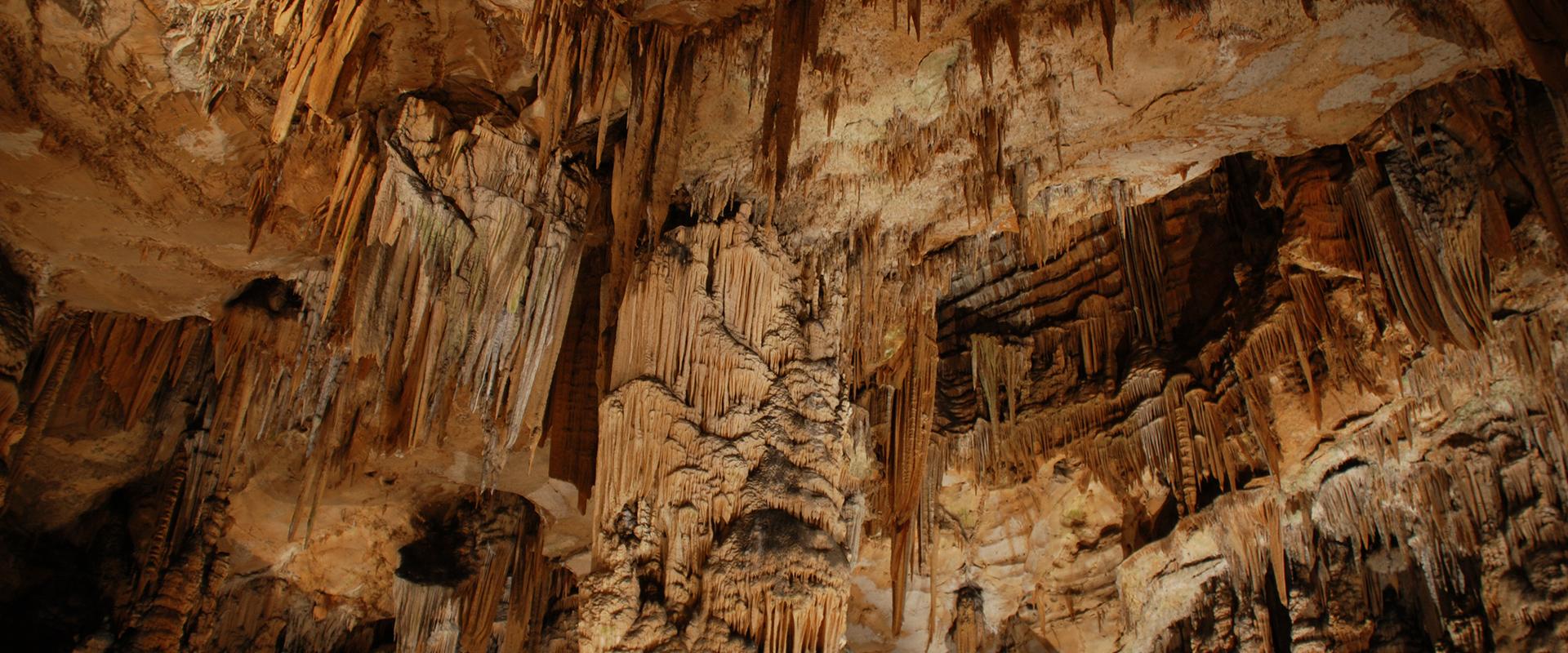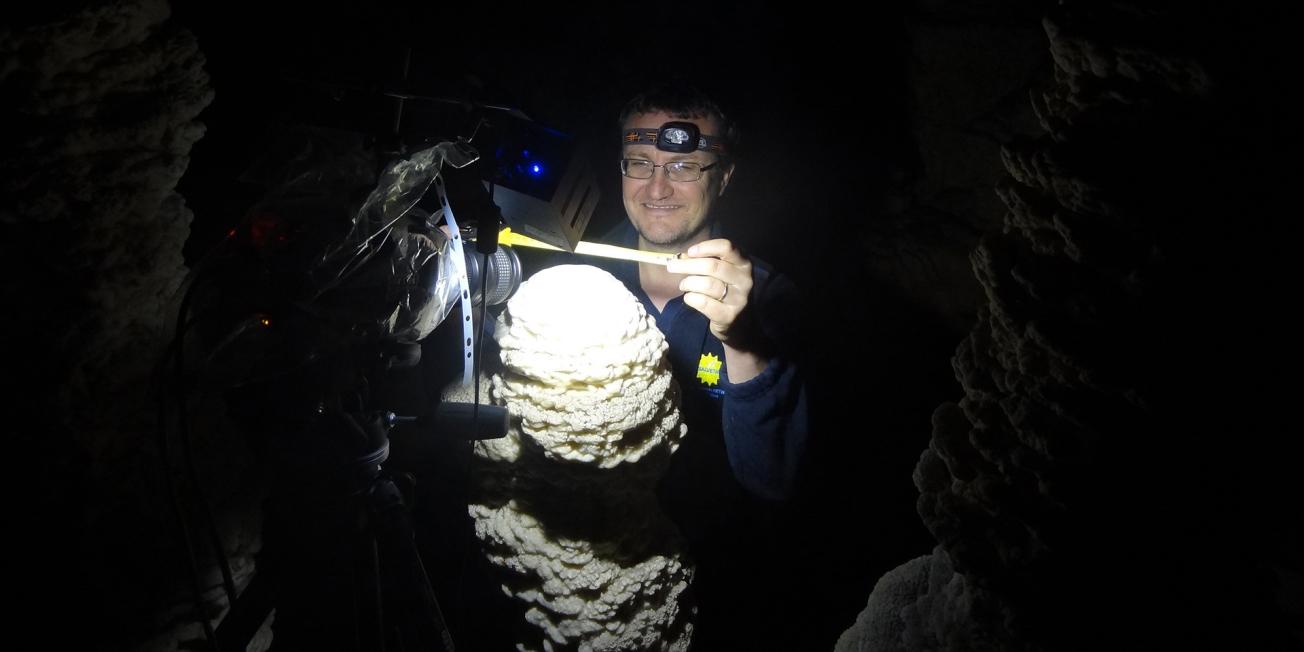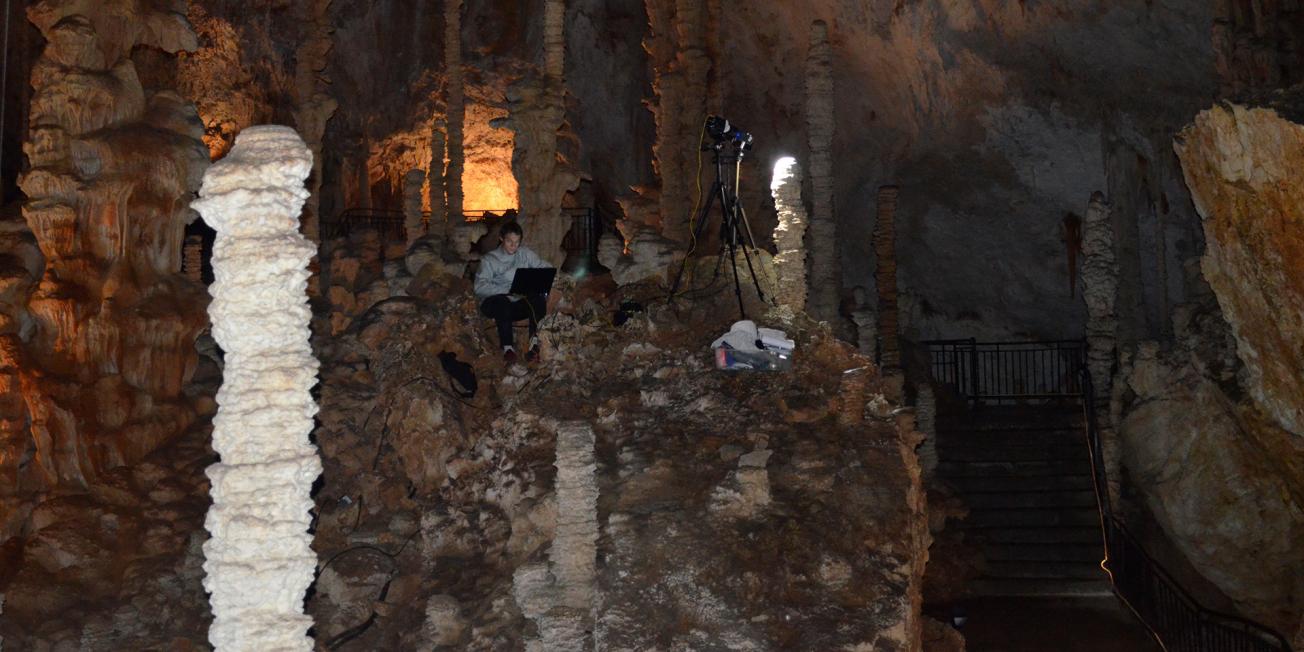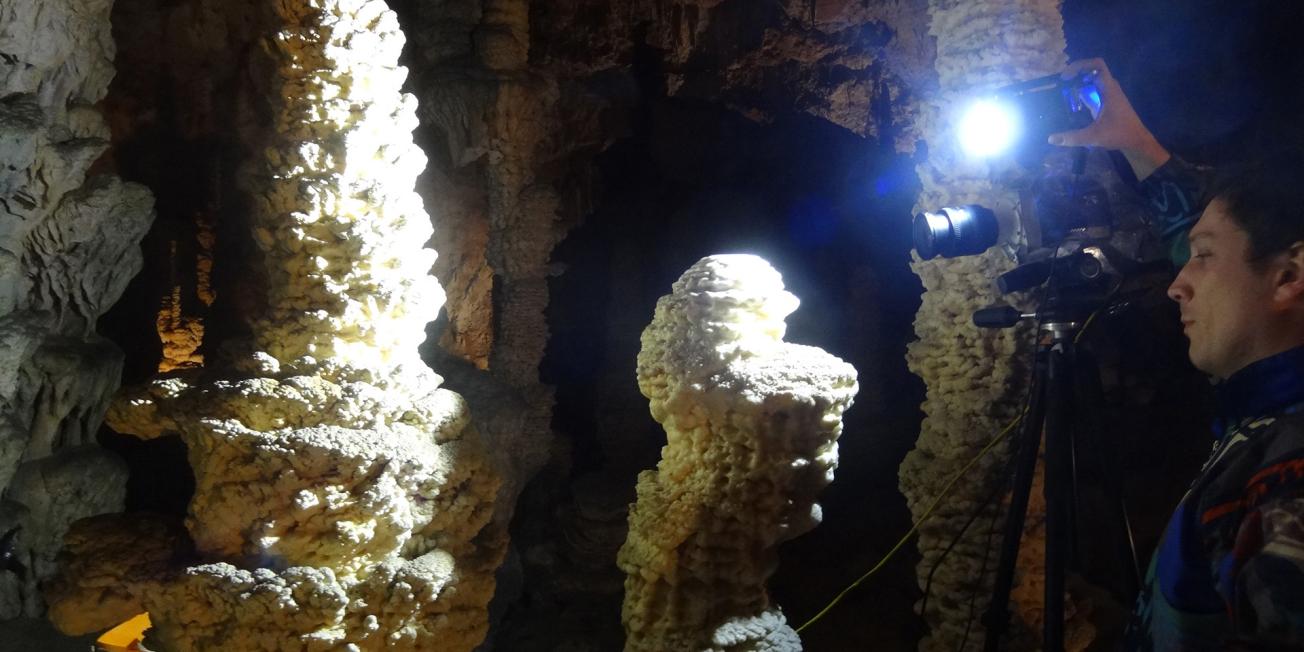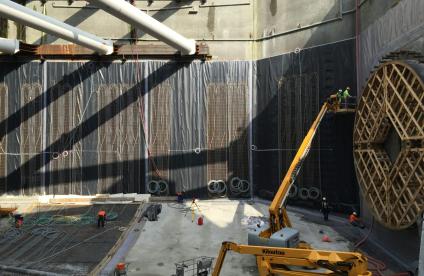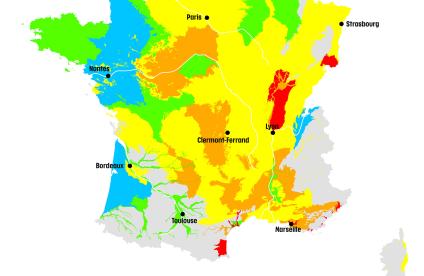A study published in the proceedings of the Royal Society, whose members include researchers from the Universities of Liège, Bordeaux and Montpellier, from the Saint Girons Géologie-Environnement-Conseil engineering consultancy and from the BRGM, has shed new light on the pattern of stalagmite formation.
Using high-frequency image analysis (5000 images per second) of hundreds of videos of falling water droplets in the process of forming concretions, the researchers found that the width of stalagmites depends on the height beneath the ceiling of each cavity. The trajectory of water droplets falling to the ground and precipitating the calcite that will form a stalagmite is not constant: the point where they fall varies continually and the resulting dispersion accounts for the width of the stalagmite that will form.
Mathematical models and their possible applications to studies of palaeoclimates.
As a drop of water falls, it sets up a micro-vortex that deviates the droplet's trajectory. The longer the fall, the greater the dispersion will be. This phenomenon was tested in the laboratory and modelled mathematically. "We can now deduce the geometry of a cave at the time when the stalagmite formed", explains Jean-Christophe Maréchal, the head of the BRGM's unit on new water resources and economics and co-author of the study.
This research group's work could therefore help to understand the very diverse forms observed in cavities. Scientific studies are also looking to apply these new results to studies of palaeoclimates from information trapped within subterranean concretions.

